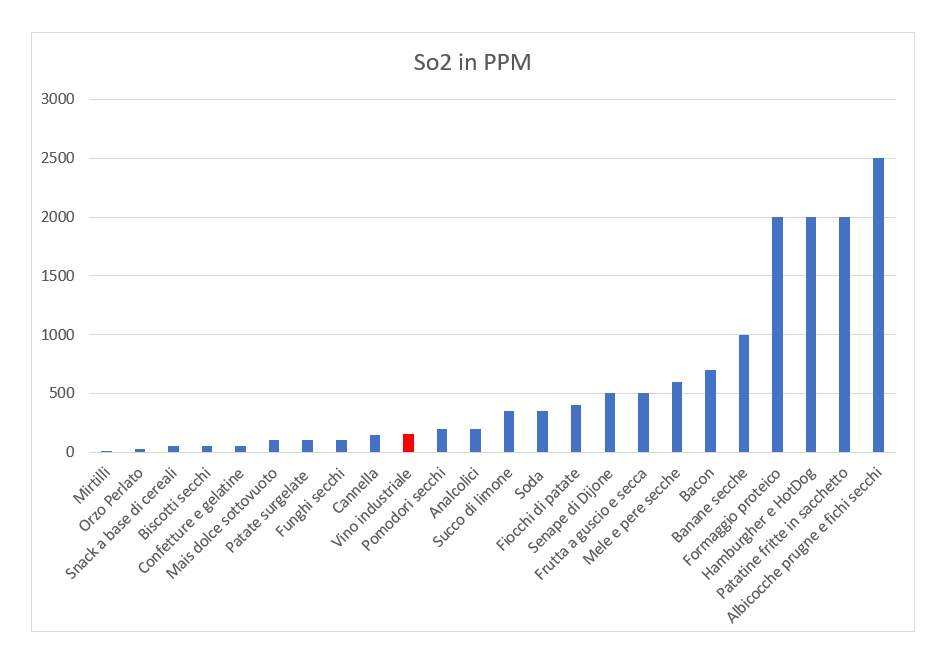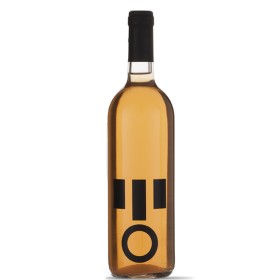- Mondo Vino
- 16537 views

What are sulphites?
Sulphites are anions composed of sulfur and oxygen atoms. The sulfite anion consists of a sulfur atom bonded to three oxygen atoms. When we talk about sulphites in food we always refer to sulfur dioxide , also called sulfur oxide, which is therefore formed by a sulfur atom bonded to two oxygen atoms.
It occurs as a gas that is very soluble in water, while its salts, usually potassium (potassium metabisulphite), calcium or sodium, appear as a white crystalline powder. This chemical conformation makes it easy to bind to oxygen, preventing oxidative phenomena, such as browning and thus stabilizing the color of the food. This feature also makes it a powerful antimicrobial and therefore an excellent food preservative.
It is also naturally produced in the fermentation process by yeasts, so much so that the ability to produce sulfur dioxide (SO2) is reported in the technical data sheet of the selected yeasts.
Sulphites: sulfur dioxide in wines
In wines there can be a notable difference in the SO2 contained and this depends precisely on the characteristics of the wine itself. A red wine is more protected from the degenerative action of oxygen thanks to its color, just as a very acid wine will be much more stable than a less acid one. Sweet wines and not particularly alcoholic wines need a greater protection than a wine with a high alcoholic or even alcoholic content, precisely because of the good protection that alcohol itself exerts.
Sulphites fall into the category of the most common food preservatives and are also naturally produced by our body, in the metabolic cycle of some amino acids and easily inactivated by endogenous detoxification systems but the fact remains that it is not the case to exaggerate with the assumption. Also, if a person has asthma, there is a roughly 5-10% chance that they are sensitive to sulfites. They must always be reported on the label if present in quantities greater than 10 parts per million (PPM - or 10 mg / L).
Use of sulphites in food
The use of sulphites in the food industry is widespread and below is a graph that compares the content of this preservative in different foods. 
As a result, if the headache that grips you after drinking a good bottle of wine makes you demonize the product, think about what you accompanied it with.
Related products


Premi e Riconoscimenti
Questo prodotto ha ottenuto uno o più premi/riconoscimenti dalle riviste o esperti del settore

- -10%


Premi e Riconoscimenti
Questo prodotto ha ottenuto uno o più premi/riconoscimenti dalle riviste o esperti del settore

- -20%


Premi e Riconoscimenti
Questo prodotto ha ottenuto uno o più premi/riconoscimenti dalle riviste o esperti del settore

- -10%


Premi e Riconoscimenti
Questo prodotto ha ottenuto uno o più premi/riconoscimenti dalle riviste o esperti del settore

- -10%


Premi e Riconoscimenti
Questo prodotto ha ottenuto uno o più premi/riconoscimenti dalle riviste o esperti del settore

- -20%


Premi e Riconoscimenti
Questo prodotto ha ottenuto uno o più premi/riconoscimenti dalle riviste o esperti del settore



Premi e Riconoscimenti
Questo prodotto ha ottenuto uno o più premi/riconoscimenti dalle riviste o esperti del settore

- -10%


